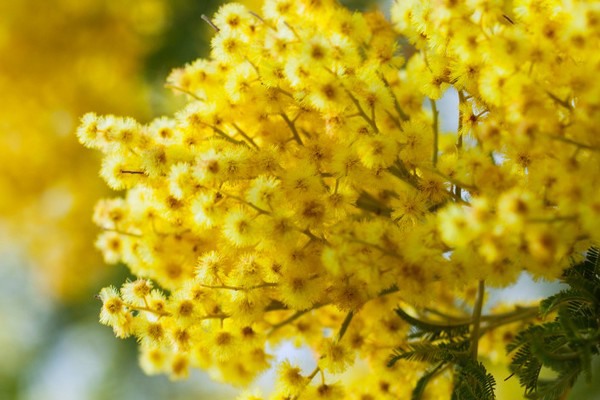On the occasion of Women's Day, let's dive into the history that made the mimosa the timeless symbol of this day in Italy.
We are in 1946, a crucial moment in the history of Italian women, in a post-war period, where women tried to make their voices heard and obtain recognition of their rights. During a demonstration in Rome, Rita Montagnana, an anti-fascist who had taken part in the partisan struggles, and Teresa Mattei, a communist militant, chose the mimosa as a symbol of their struggle.
The mimosa, with its bright and fragrant yellow flowers, was also a very cheap flower and represented hope and vitality in a moment of rebirth and change. The choice of the mimosa went beyond the simple aesthetic aspect of the flower. Growing lush in March, the mimosa symbolized the inherent strength of women, who not only survive but flourish even in the most difficult circumstances.

The choice of the date of March 8 gets a little tricky, as there are different versions: from March 8, 1908, in memory of a terrible fire in a textile factory in New York in which many women who worked there died, to March 8, 1917, where in St. Petersburg, a demonstration was held organized by women demanding the end of the war. What is certain is that in 1977, the United Nations officially recognized March 8 as International Women's Day.
This day has transformed over time into a time of celebration, reflection, and action to promote women's rights around the world. The mimosa, with its connection to this significant chapter in women's history, continues to be a tangible symbol of progress and commitment to a more equitable future. The mimosa, with its botanical name acacia dealbata, is a flower with a unique charm that enchants our senses. Native to Australia, this plant was introduced to Europe in the 19th century and quickly won the hearts of many cultures, becoming a symbol of joy and vitality. The mimosa is often given as a gift together with the classic red roses. While roses symbolize romantic love, mimosa adds a layer of appreciation and respect to women. The union of these two floral wonders becomes a gesture full of meaning, expressing affection, admiration, and recognition for the strength and beauty of women.
For more information
Flora Toscana
Email: [email protected]
www.floratoscana.it
